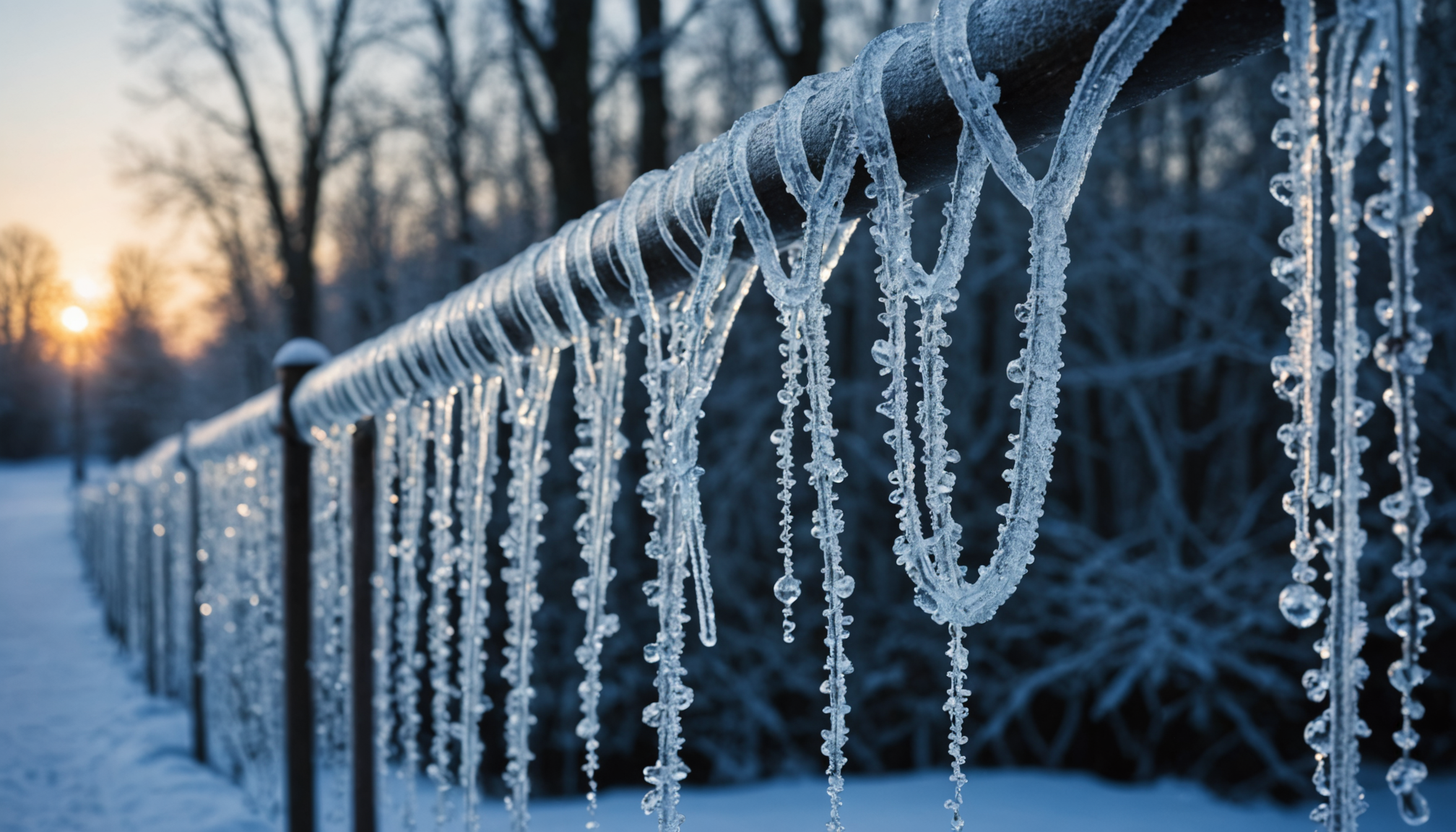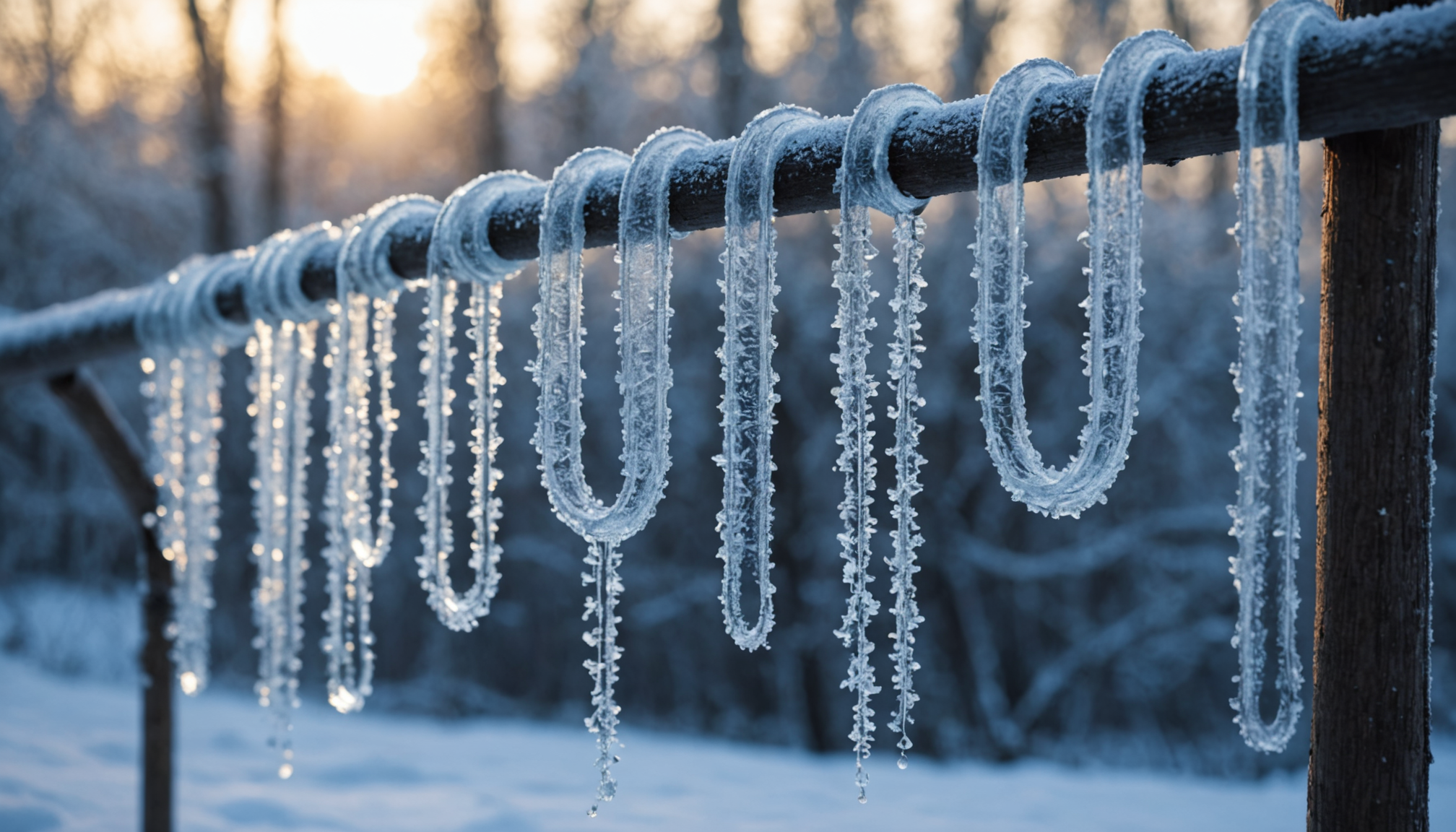Missouri is known for its varied climate, with hot summers and cold winters. During winter, the region experiences freeze events that can cause significant challenges for homeowners, particularly concerning plumbing systems. Understanding Missouri’s freeze patterns is essential for adequately winterizing your hose bibs and safeguarding your home’s plumbing.
According to historical weather data from the National Weather Service, Missouri can experience temperatures below freezing as early as late October and as late as early April. These freeze events are often accompanied by swift and dramatic temperature changes, which exacerbate the risk of plumbing issues. For instance, sudden temperature drops can lead to the rapid freezing and expansion of water inside pipes, causing them to burst. This risk makes understanding local freeze patterns crucial for effective hose bib winterization.
Missouri generally experiences an average of 110 freezing days annually, with January being the coldest month. Residents, particularly those in rural and suburban areas, need to be proactive in preparing their outdoor water systems, including hose bibs, for the winter months. The region’s freeze-thaw cycles can be unpredictable, often intensifying during years of irregular weather, prompting increased vigilance from homeowners. Such cycles are especially harmful to hose bibs, which are often exposed to the elements and are one of the most vulnerable parts of a home’s exterior plumbing in the face of freezing conditions.
By gaining a deep understanding of Missouri’s freeze patterns, homeowners can take timely steps to insulate and protect their hose bibs and other outdoor plumbing fixtures. This knowledge helps in planning and executing preventive measures, ultimately saving time, expense, and frustration associated with potential water damage and repairs. Armed with this understanding, you can make informed decisions to effectively guard against freeze-related plumbing issues, thus ensuring your property remains protected throughout the harshest winter months.
Preparing your hose bib for winter
To prepare your hose bib for Missouri’s winter months, a systematic approach is necessary, especially considering the region’s unpredictable freeze-thaw cycles. Begin by identifying all outdoor faucets around your home. Shutting off the water supply to these hose bibs is a critical initial step. Often, there is a dedicated shut-off valve inside your house, usually located in a basement or crawlspace, which controls the water flow to external faucets. Turn this valve clockwise to cut off the supply. Ensuring that there is no residual water inside the hose bibs is equally important. Open the outdoor faucet to allow any remaining water to drain out. This simple action prevents water from freezing inside the bib, which can cause pipes to burst due to the expansion of ice.
It’s wise to leave the faucet in the open position after draining, as this allows any expansion from unexpected freezing to occur in the open air, reducing pressure buildup inside the pipes. With the supply of water effectively halted and the system drained, your plumbing will be less susceptible to freezing temperatures.
For added protection, purchase and install insulated faucet covers. These covers are inexpensive and can be easily secured over your hose bibs, providing an extra layer of insulation against cold air. If your hose bib is outdated or particularly vulnerable, consider replacing it with a frost-free model. These special faucets feature a longer stem that keeps the valve—and any residual water—indoors, reducing the risk of freezing significantly.
Remember that preparing your hose bib for winter not only safeguards against water damage but also prolongs the lifespan of your plumbing system. Each autumn, make it a routine to review and implement these winterization steps to ensure your Missouri home’s plumbing remains resilient in the face of inevitable freeze events.
- Ensure that the indoor shut-off valve for your outdoor faucet is closed to halt the water supply effectively.
- Completely drain outdoor faucets to eliminate any water that could freeze and cause pipe damage.
- Use insulated faucet covers to provide an extra layer of protection against Missouri’s harsh winter conditions.
- Leave the hose bib open after draining to prevent pressure buildup from any ice formation.
- Consider upgrading to a frost-free hose bib, which can offer enhanced protection against freezing temperatures.
Insulating outdoor faucets
Properly insulating outdoor faucets is a critical step in winterization for Missouri homes, where freezing temperatures can cause severe plumbing issues. A common error homeowners make is underestimating the importance of insulation or failing to install it correctly. It might seem simple, yet missing this essential part could lead to frozen or burst pipes, resulting in costly repairs.
One typical mistake is using inadequate materials for insulation. Homeowners sometimes opt for old rags or newspapers to wrap around their hose bibs, believing these are sufficient. While any additional material might offer marginal protection, these makeshift solutions are far less effective than proper insulated covers. Hardware stores offer durable, purpose-made insulated faucet covers that are specifically designed to withstand extreme weather conditions. These covers are made from thick, weather-resistant foam rubber or fiberglass, providing a much more reliable barrier against the cold.
Another common oversight is applying insulation too late. Many people wait until the first freeze warning to address their outdoor faucets, but the unpredictability of Missouri’s weather means temperatures can drop suddenly, often catching homeowners off guard. To avoid this, begin insulating as part of a broader fall home maintenance schedule. Safeguarding your hose bibs in advance can prevent last-minute scrambling and potential damage.
Moreover, some individuals forget to seal off gaps and cracks around the base of their outdoor faucets, leaving vulnerabilities that can allow freezing air to penetrate the insulation layer. A simple solution is to apply weatherproof caulk or use an expandable foam sealant to close any openings. Paying attention to these details ensures the insulation envelope is fully effective.
In addition to securing proper insulation, ensure that insulated covers are installed tightly. Inadequately secured covers can be knocked off by wind or shifting temperatures, compromising their effectiveness. Always follow the installation instructions provided with the covers to ensure they fit snugly against the siding of the house. Occasionally checking throughout the winter months to confirm that they remain securely in place can further prevent issues.
Avoiding these common mistakes in the insulation process not only enhances the effectiveness of your winterization efforts but also extends the life of your plumbing infrastructure. With the correct materials, proactive timing, and careful attention to detail, you can confidently protect your hose bibs from Missouri’s harsh freeze events, safeguarding your home from unnecessary damage.
Draining and storing hoses
Draining and storing hoses is a critical component of the winterization process in Missouri, where weather conditions can shift rapidly. One of the first steps in this task is to ensure that any garden hoses connected to the hose bibs are fully disconnected. Leaving hoses attached can trap water in the faucet, and when temperatures drop, this trapped water can freeze and cause the pipes to crack or burst. Once the hoses are detached, take the time to completely drain them of any remaining water. Simply coiling them will not suffice; residual water can freeze, expand, and damage the hose material.
After thoroughly draining the hoses, it is essential to store them in a suitable location. Opt for a storage spot shielded from the cold, such as a garage or basement, where hoses won’t be subjected to freezing temperatures. This not only keeps the rubber or vinyl from becoming brittle and cracked but also ensures they’re ready for immediate use once warmer weather returns. When storing, avoid tightly coiling them to prevent kinks or other long-term damage. Using hose reel storage systems can facilitate proper storage, extending the life and functionality of the hoses.
Furthermore, it’s a wise practice to label heavy-duty hoses that are for hot water use or high-pressure conditions, keeping track of their locations and uses. This helps in organizing outdoor activities, repairs, or gardening come spring.
Implementing these steps not only contributes to effective winterization but also protects your financial and time investments in your outdoor tools. As you secure all hoses and related equipment for the season, you’ll be taking another proactive step towards maintaining the integrity of your home’s plumbing during Missouri’s notorious cold spells.
Remember, taking the time now to store your hoses properly is an investment in hassle-free spring days, where everything comes back to life without the worry of costly repairs or replacements. Embrace the process with readiness and resolve—it’s a commitment that brings peace of mind throughout Missouri’s unpredictable freeze events.
Troubleshooting common issues
- Why is my hose bib still leaking even after winterizing?
- One possible reason could be leftover water inside the faucet or pipes that expanded and caused small cracks due to freezing. Ensure the faucet and connected pipes are completely drained and check for any visible damage, as these could result in persistent leaking.
- What should I do if my outdoor faucet won’t turn on in spring?
- First, verify that the indoor shut-off valve is open. If the valve is open and there’s still no water flow, check the mint condition of the outdoor faucet for any visible damage. Mineral buildup or freeze-related issues might require professional plumbing intervention to inspect for interior blockages or breaks in the line.
- Why did my hose bib become loose over the winter?
- Repeated freeze-thaw cycles can cause expansion and contraction, sometimes loosening connections or fittings. It’s a good idea to inspect all fixtures and tighten any loose connections before winterization and once again in spring to ensure they stay secure.
- How can I tell if my pipes have burst during a freeze?
- You may experience reduced water pressure or no water flow from faucets connected to potentially burst pipes. Water stains, unexplained puddles, or an unusual increase in water bills can also indicate burst pipes, necessitating immediate professional assessment.
- Can I use the same insulation methods if I live in southern Missouri?
- Yes, while southern Missouri may not experience as severe freezes as the northern part, the risk of freezing still exists. Using proper insulation, such as insulated covers and sealants, is a sound precaution regardless of your specific location within Missouri to protect your hose bibs and plumbing systems effectively.

